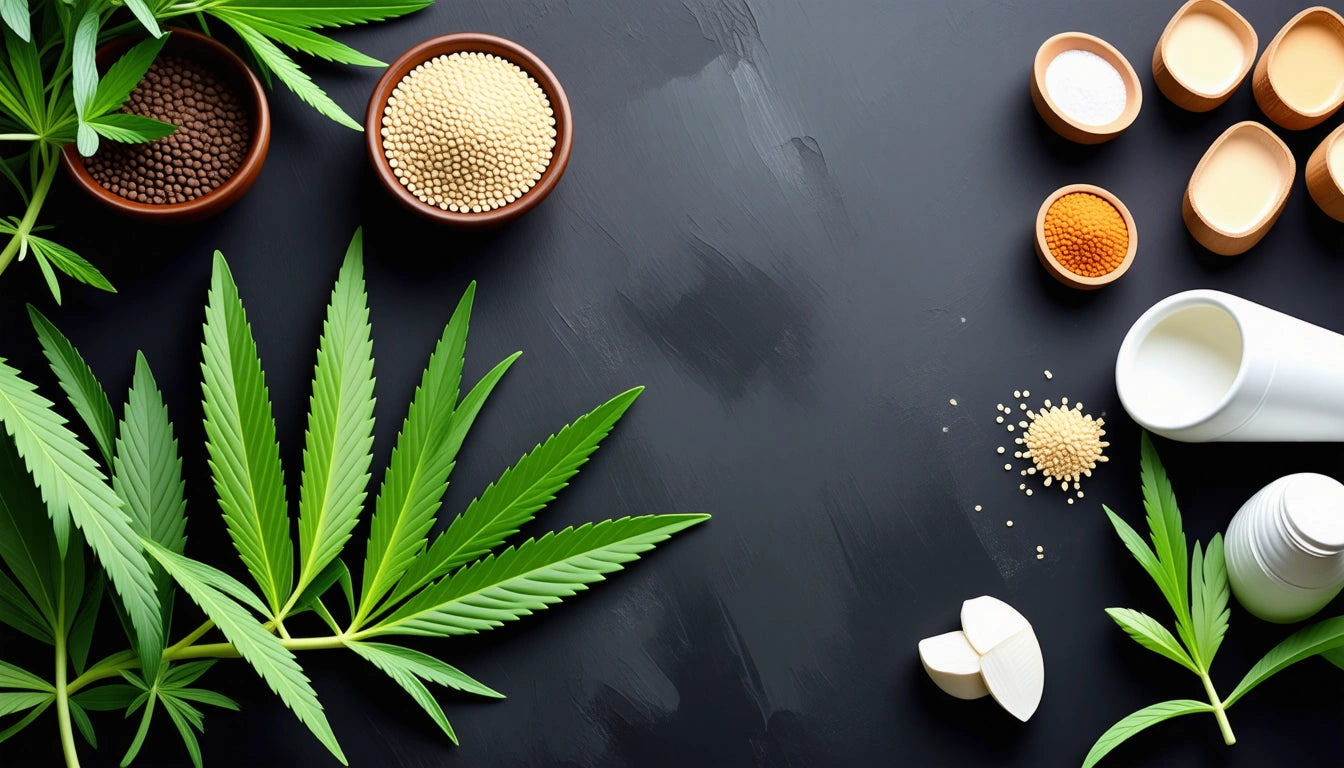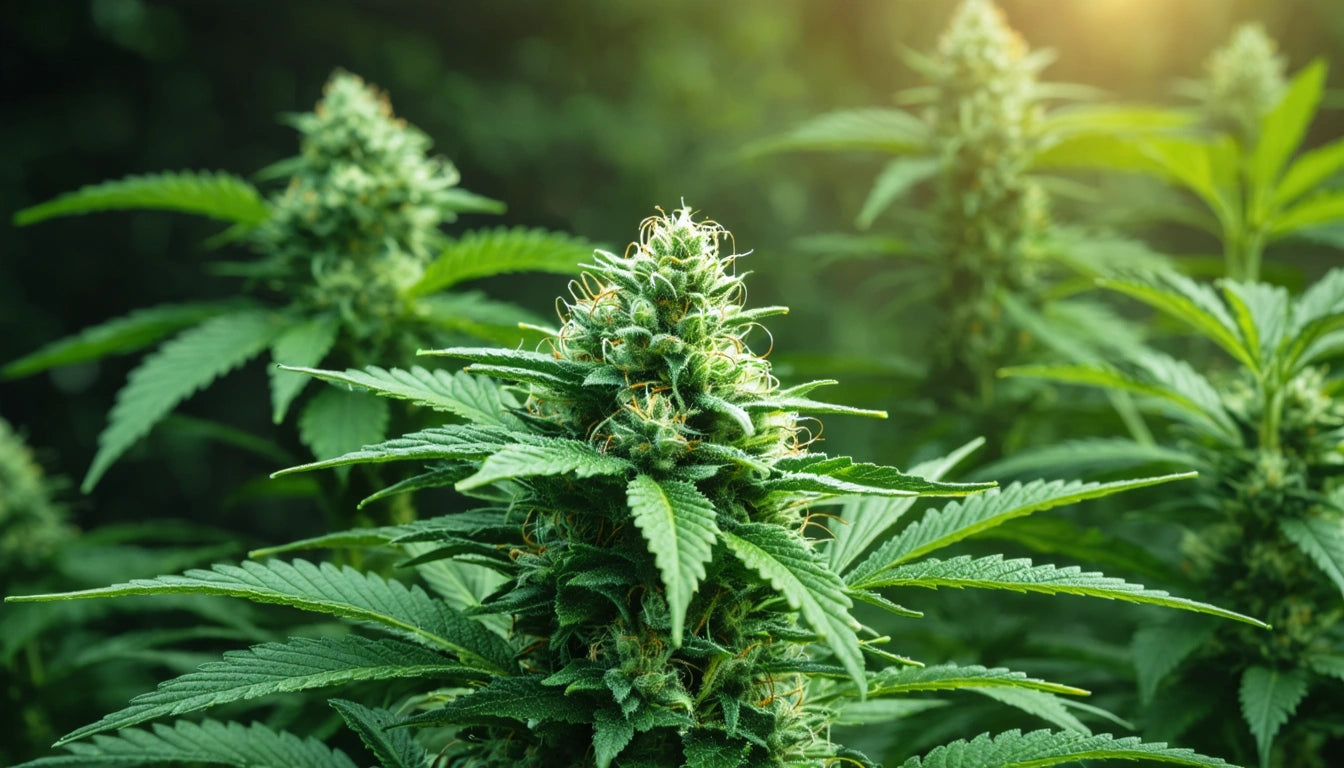- Hemp Cultivation Basics: How to Grow Hemp from Seed
- Preparing Hemp Seeds for Consumption and Use
- Culinary Applications: How to Cook with Hemp Seeds
- Hemp Seed Derivatives: Making Milk, Oil, and Butter
- Therapeutic Applications: Using Hemp Seed Oil for Pain Relief
- The Sustainable Hemp Future: Innovations and Opportunities
Growing and Utilizing Hemp: A Guide to Planting, Cooking, and Crafting With Hemp Seeds
Hemp is one of the most versatile plants on the planet, offering tremendous value from its seeds, stalks, and flowers. Whether you're interested in growing your own hemp or discovering new ways to incorporate hemp seeds into your lifestyle, this comprehensive guide covers everything from cultivation to kitchen applications and beyond.
Hemp Cultivation Basics: How to Grow Hemp from Seed
Learning how to grow hemp from seed starts with understanding the plant's fundamental needs. Hemp thrives in well-drained soil with a pH between 6.0 and 7.5. Unlike its cousin marijuana, industrial hemp contains minimal THC (less than 0.3%) and is legal to grow in many regions with proper licensing.
Site Selection and Preparation
When planning how to plant hemp, choose a location that receives full sun exposure. Hemp plants require at least 12 hours of sunlight daily for optimal growth. Prepare your soil by:
- Testing soil pH and adjusting if necessary
- Adding organic matter to improve drainage and fertility
- Ensuring the planting area is free from competing weeds
For detailed information on soil preparation and regional considerations, you can refer to our comprehensive guide to growing and harvesting hemp.
Planting and Maintenance
If you're wondering how to raise hemp successfully, timing is crucial. Plant seeds after the last frost when soil temperatures reach at least 50 °F (10 °C). For direct seeding:
- Plant seeds 0.5 to 1 inch deep
- Space rows 3 to 4 feet apart for fiber hemp
- For seed production, allow more space between plants
Hemp requires moderate watering, with particular attention during germination and the first six weeks of growth. While generally pest-resistant, monitor for aphids and corn borers, especially in organic cultivation.
Preparing Hemp Seeds for Consumption and Use
Once harvested, learning how to prepare hemp seed properly ensures maximum nutritional benefit and flavor. Raw hemp seeds come in two forms:
- Whole seeds with the outer hull intact
- Hemp hearts (hulled seeds) with the crunchy outer shell removed
For whole seeds, a light toasting enhances flavor. Spread them on a baking sheet and toast at 325 °F for 8-10 minutes, stirring occasionally. For more information on storage and preservation methods, check out everything you need to know about hemp seeds.
Culinary Applications: How to Cook with Hemp Seeds
If you're wondering how to cook with hemp seed, their nutty flavor and impressive nutritional profile make them incredibly versatile in the kitchen. Hemp seeds contain all nine essential amino acids, making them a complete protein source.
Simple Ways to Use Hemp Seeds
- Sprinkle raw hemp hearts on salads, yogurt, or oatmeal
- Blend into smoothies for added protein and omega fatty acids
- Mix into baked goods like muffins, bread, or granola bars
- Use as a crunchy coating for fish or chicken
- Incorporate into homemade energy balls or protein bars
For grinding hemp seeds into flour or processing them for various applications, many enthusiasts use specialized grinding equipment that preserves the nutritional integrity while achieving the perfect consistency for cooking applications.
Hemp Seed Derivatives: Making Milk, Oil, and Butter
How to Make Hemp Milk from Hemp Seeds
Making homemade hemp milk is surprisingly simple and more economical than store-bought alternatives. To create your own:
- Blend 1 cup of hemp hearts with 4 cups of water
- Add optional sweeteners like dates, maple syrup, or vanilla extract
- Strain through a nut milk bag if desired (though many find this unnecessary)
- Store in the refrigerator for up to 5 days
How Do You Make Hemp Seed Oil?
While commercial hemp seed oil requires specialized cold-pressing equipment, you can make a simple hemp seed oil infusion at home:
- Gently heat hemp hearts in a carrier oil like grapeseed or olive oil
- Maintain low heat (below 120 °F) to preserve nutritional benefits
- Strain through cheesecloth after cooling
- Store in a dark glass container in the refrigerator
How Do You Make Hemp Seed Butter?
Creating homemade hemp seed butter offers a nutritious alternative to traditional nut butters:
- Toast 2 cups of hemp hearts lightly (optional)
- Process in a high-powered blender or food processor for 8-10 minutes
- Add a pinch of salt and optional sweeteners
- Continue processing until smooth and creamy
- Store in an airtight container in the refrigerator
For more creative ways to use hemp seeds in your kitchen, explore our guide on versatile uses and DIY creations of hemp products.
Therapeutic Applications: Using Hemp Seed Oil for Pain Relief
Many people wonder how to use hemp seed oil for pain management. While hemp seed oil doesn't contain CBD or THC, it offers anti-inflammatory benefits through its optimal ratio of omega-3 and omega-6 fatty acids.
For topical pain applications:
- Apply hemp seed oil directly to affected areas
- Create a massage oil by adding a few drops of essential oils
- Use as a base for homemade salves and balms
- Incorporate into warm compresses for joint pain
The gamma-linolenic acid (GLA) in hemp seed oil may help reduce inflammation associated with arthritis and other inflammatory conditions. For internal use, a typical serving is 1-2 tablespoons daily, either taken directly or incorporated into foods.
To learn more about the health properties of hemp seeds, visit our article on the health benefits of hemp seeds.
The Sustainable Hemp Future: Innovations and Opportunities
As interest in sustainable agriculture grows, hemp stands out as a crop with remarkable environmental benefits. Hemp plants sequester carbon, require minimal water compared to other crops, and can be grown without synthetic pesticides.
The future of hemp cultivation and utilization looks promising with innovations in:
- Vertical farming techniques for urban hemp production
- Advanced processing methods for more efficient seed oil extraction
- Development of hemp-based alternatives to plastic packaging
- Integration of hemp into regenerative agriculture systems
Whether you're growing hemp for personal use or exploring its culinary and therapeutic applications, hemp seeds offer a sustainable, nutritious addition to a health-conscious lifestyle. With proper knowledge of how to plant hemp and utilize its seeds, you can tap into this ancient plant's modern potential.
For those interested in purchasing quality hemp seeds and products rather than growing their own, check out our guide on where to buy hemp products.











Leave a comment
All comments are moderated before being published.
This site is protected by hCaptcha and the hCaptcha Privacy Policy and Terms of Service apply.